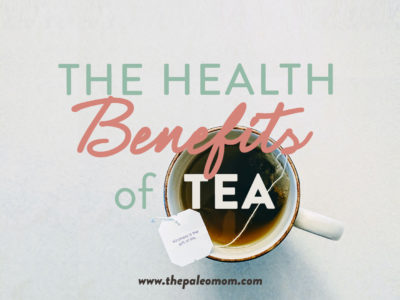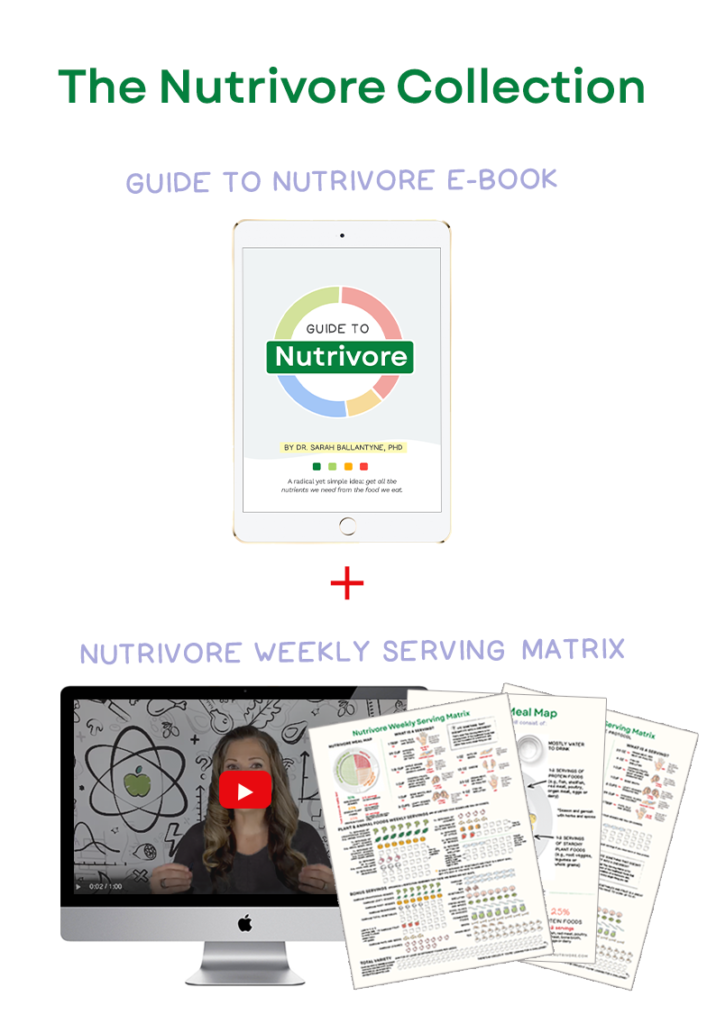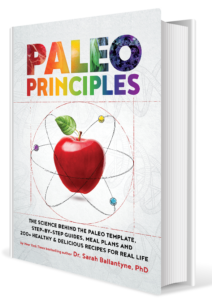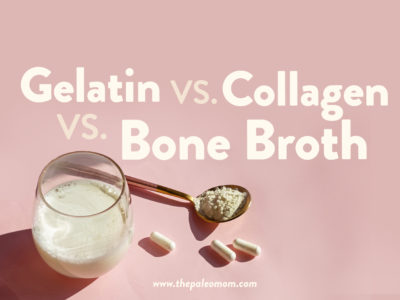Tea is one of the most versatile and well-loved beverages out there! It can help us kickstart a sleepy morning, or it can keep us company on a cold winter day. In the 4000-plus years since its origin, tea has become one of the most popular beverages in the world (second only to water). And, it just so happens that tea is just as health promoting as it is delicious!
“True” tea—opposed to herbal infusions we sometimes call tea (such as chamomile tea or rooibos tea)—is made from leaves of the Camellia sinensis plant, an evergreen shrub native to China and Southeast Asia. Depending on how these leaves are harvested and processed, we end up with one of five different types of tea:
- White tea, which is made from young tea leaves and unopened buds that are picked and allowed to naturally dry.
- Green tea, which is made from leaves that are picked, withered, heat-treated (steaming or firing) to prevent oxidation, and rolled.
- Oolong tea, which is made from leaves that are repeatedly rolled and oxidized many times over the course of hours or even days.
- Black tea, which is made similarly to oolong tea but is allowed to oxidize more completely.
- Pu-erh tea, which is made from leaves that have been prepared similarly to green tea, but also fermented and aged.
Would you believe that it takes about 2,000 tea leaves just to create one pound of finished tea?!
While green tea and black tea have been the most extensively studied, research has shown beyond a doubt that tea supports our health. For example, green tea consumption is associated with lower all-cause mortality and potentially weight loss, and both green and black tea have been associated with LDL cholesterol reduction, lower blood pressure, reduced risk of stroke and heart disease, potential reduction in dental plaque formation, and even a lower risk of certain cancers. And unlike coffee which benefits some people but causes inflammation in others (see Coffee and Autoimmune Disease and Coffee as a Mediator of Health & Longevity), all types of tea offer unique benefits across the board!
Tea Polyphenols
 Tea owes many of its effects to its phenolic composition, which varies depending on the type of tea (see also Polyphenols: Magic Bullet or Health Hype? and The Amazing World of Plant Phytochemicals: Why a diet rich in veggies is so important!). The main benefits of green tea, for example, are attributed to its catechins—in particular the well-studied epigallocatechin-3-gallate (EGCG), which is the most abundant and active compound in green tea, as well as epicatechin (EC), epicatechin-3-gallate (ECG), and epigallocatechin (EGC). Green tea is so rich in these catechins that it’s between 20 and 45% polyphenols by weight!
Tea owes many of its effects to its phenolic composition, which varies depending on the type of tea (see also Polyphenols: Magic Bullet or Health Hype? and The Amazing World of Plant Phytochemicals: Why a diet rich in veggies is so important!). The main benefits of green tea, for example, are attributed to its catechins—in particular the well-studied epigallocatechin-3-gallate (EGCG), which is the most abundant and active compound in green tea, as well as epicatechin (EC), epicatechin-3-gallate (ECG), and epigallocatechin (EGC). Green tea is so rich in these catechins that it’s between 20 and 45% polyphenols by weight!
Research has found numerous benefits associated with EGCG. For example, EGCG has been shown to exert anti-cancer properties by regulating enzymes involved in the cell cycle, resulting in inhibited cell proliferation, cell cycle arrest, and apoptosis. This catechin also has antimicrobial activity against pathogens via a variety of mechanisms—including damaging the cell walls of bacteria by interacting with surface proteins, causing oxidative stress to Gram-negative bacteria by producing hydrogen peroxide, and binding directly to exposed peptidoglycan layers in Gram-positive bacteria (see also What Is the Gut Microbiome? And Why Should We Care About It?). Studies have shown that EGCG prevents the cytotoxicity of Shiga-like toxin 1 from E. coli, and also inhibits the growth of E. coli 0157:H7, Salmonella typhimurium, Salmonella enteritidis, Listeria monocytogenes, Staphylococcus aureus, and Bacillus cereus. EGCG also has high antioxidant activity, protecting against oxidative damage in cells and tissue by inhibiting pro-oxidant enzymes like cyclooxygenase, xanthine oxidase, lipoxygenase, and inducible nitric oxide synthase. It’s been studied for a potential role in treating rheumatoid arthritis due to its strong anti-inflammatory properties. And, EGCG has been shown to have neuroprotective effects, including for Alzheimer’s disease and HIV-associated dementia.
Although green tea tends to steal the spotlight due to its EGCG, black and oolong teas have some unique components of their own! Both of these teas contain theaflavins, which are antioxidant polyphenols that get formed during the oxidation of tea leaves (more specifically, from the condensation of flavan-3-ols contained in those leaves). One study compared the theaflavins in black tea to the catechins in green tea and found that theaflavin-3,3’-digallate had even higher antioxidant activity than any of the green tea catechins, and other theaflavins were likewise comparable to green tea catechins in their antioxidant potency.
Given the above, it shouldn’t come as a surprise that theaflavins have been associated with many of the same health benefits as EGCG—including protection against cardiovascular disease and cancer, reduction in blood pressure, and reduction in LDL cholesterol. However, it’s also worth noting that even if catechins and theaflavins have similar effects in studies, the phenolic content of green tea is overall higher than in black or oolong teas—giving green tea a leg up in terms of benefits on a per-cup basis.
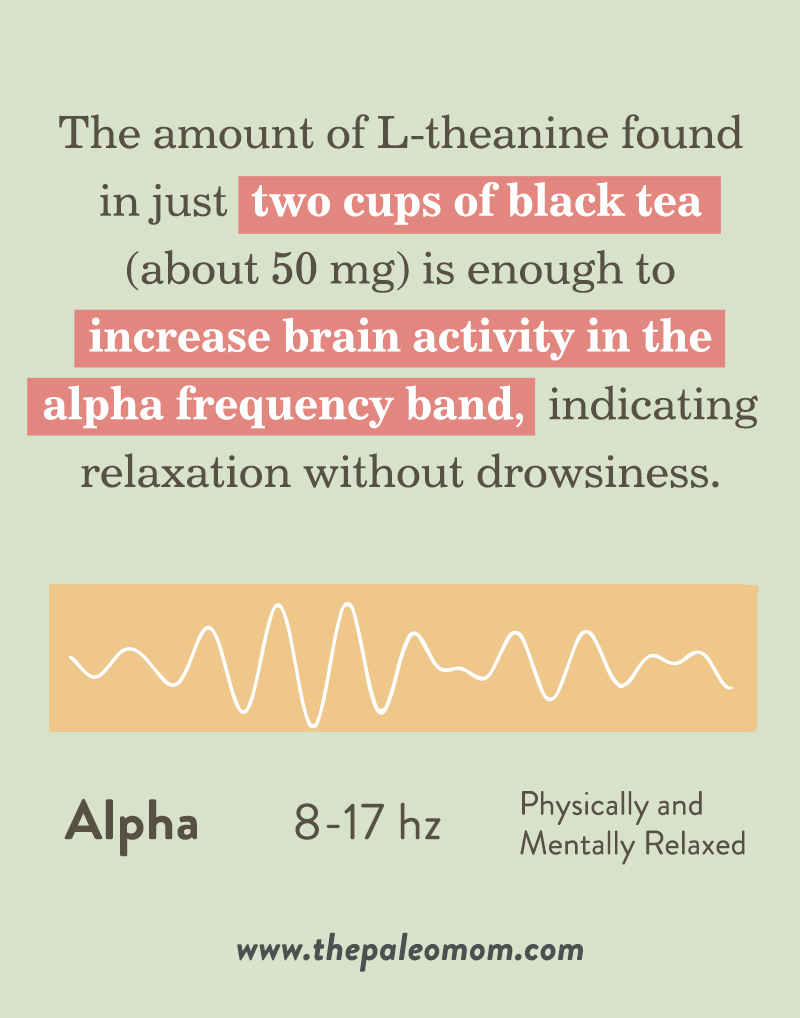 L-Theanine
L-Theanine
Tea is also rich in a unique amino acid called L-theanine, which has been shown to modulate some aspects of human brain function and promote calmness—particularly by affecting neurotransmitters (see also How Stress Undermines Health). For example, L-theanine has a similar structure to the excitatory neurotransmitter glutamic acid, and is able to both blockade glutamate receptors and inhibit glutamate reuptake. L-theanine is also associated with higher concentrations and release of dopamine concentrations, increased GABA concentrations, decreased norepinephrine levels, and suppression of the general release of serotonin.
Research has shown that the amount of L-theanine found in just two cups of black tea (about 50 mg) is enough to increase brain activity in the alpha frequency band, indicating relaxation without drowsiness. (It only takes about 30 minutes for L-theanine to cross the blood-brain barrier and start influencing the central nervous system, and reaches maximum levels at about five hours after ingestion—explaining the long-lasting soothing effect we feel after drinking tea!) And, it appears that L-theanine can help counteract some of the effects of caffeine (another component of tea)! One study found that combining L-theanine with caffeine (in amounts and ratios similar to a cup or two of tea) eliminated both the behavioral effects and blood-pressure-raising effects of caffeine. On the whole, it seems theanine in tea may play a beneficial role in cognitive performance (due to increasing monoamines), anxiety (due to its effects on serotonin and GABA), and neurological health (due to antagonizing the effects of glutamate).
But, L-theanine has other potential benefits as well! One in vitro study found that L-theanine was able to attenuate or prevent a number of effects of the neurotoxicants rotenone and dieldrin, including DNA fragmentation, apoptotic death, the upregulation of heme oxygenase-1, the down-regulation of extracellular signal-regulated kinase1/2 phosphorylation, and the down-regulation of brain-derived neurotrophic factor and glial cell line-derived neurotrophic factor. All of this suggests that L-theanine may be neuroprotective, including against toxins related to Parkinson’s disease, and may help explain tea’s apparent protective effects against this disease.
Nutrivore Weekly Serving Matrix
An easy-to-use and flexible weekly checklist
to help you maximize nutrient-density.
The Weekly Serving Matrix is very helpful! I’ve been eating along these lines but this really helps me know where to focus vs. which foods serve a more secondary role. It’s super helpful and has taken a lot of worry out of my meal planning. Thanks!
Jan
And it doesn’t end there. Theanine has been shown to alleviate some of the toxic side effects of anticancer drugs, suppress elevated cholesterol levels (by increasing bile acid excretion and helping eliminate cholesterol from the body), inhibit tumor growth (by targeting several growth factor receptor signaling pathways), improve memory, protect cardiovascular health (by increasing the production of nitric oxide and enhancing artery vasodilation), reduce alcohol-induced liver injury (by increasing the activities of alcohol dehydrogenase and aldehyde dehydrogenase and lowering cytochrome P450 CYP 2E1), and improving immunity in certain circumstances (especially when combined with L-cystine, which together enhance levels of serum IgG and antigen specific IgM, as well as protects against extreme exercise-induced alterations in immune response). Is it any wonder that drinking tea is associated with so many health improvements?!
Tea and the Gut Microbiome

Another way tea benefits us is through its impact on the gut microbiota (see What Is the Gut Microbiome? And Why Should We Care About It?). Because the polyphenols in tea aren’t completely absorbed in the GI tract, they can reach the microbiota in the colon and get metabolized by bacteria there, leading to the release of important metabolites. Along with antimicrobial activity against the previously mentioned pathogens, tea polyphenols and their metabolites have been shown to selectively repress the growth of Clostridium difficile, Clostridium perfringens, and some species of Bacteroides—all while sparing beneficial commensals such as Lactobacillus and Bifidobacterium species. (What’s more, green tea has been shown to actually increase the proportion of Bifidobacterium in the microbiota!) This suggests that tea polyphenols can help modulate the gut bacteria through their prebiotic activity.
In a study of mice, both green and black tea polyphenols altered the ratio of obesity-associated bacteria to leanness-associated bacteria, indicating prebiotic activity with potential benefits for weight regulation. Black tea polyphenols, specifically, also appear to be less readily absorbed than the polyphenols in green tea, allowing them to spend more time in the GI tract (where they can interact with the resident microbes!). Research has shown that black tea polyphenols increase the abundance of the Pseudobutyrivibrio (which is associated with energy metabolism) as well as the formation of beneficial short-chain fatty acids, helping explain the mechanism behind black tea’s health and weight loss benefits.
In mice fed high-fat diets, supplementation with green tea powder along with a single probiotic strain (Lactobacillus plantarum DSM 15313) dramatically increased the diversity of the gut microbiota, and more specifically helped the Lactobacillus strain flourish compared to mice given the probiotic but no green tea powder. This suggests a fascinating relationship between tea and beneficial microbes, with tea potentially enhancing the proliferation of probiotics we ingest from elsewhere!
In a mouse model of colitis, supplementation with the tea polyphenol EGCG not only inhibited carcinogenesis in the mice’s colons, but also counteracted other cancer-related changes in the microbiota profile. In particular, EGCG prevented the rise of potentially carcinogenic bacteria (including some members of Bacteroides) while also counteracting the decrease in beneficial butyrate producers such as Clostridiaceae and Ruminococcus. And, in rats, long-term consumption of green tea polyphenols was able to increase levels of Bacteroidetes and Oscillospira (which have been linked to the “lean” phenotype in both animal models and humans) and deplete levels of Peptostreptococcaceae (which has been linked to a colorectal-cancer-prone phenotype)—all in a dose-dependent manner.
And, what about in humans? Tea is no less beneficial for our gut health than it is for lab animals! One trial tested the effects of 10 days of green tea consumption on human fecal microbiota, and found that the tea increased the proportion of Bifidobacterium, one of the most well-studied probiotic groups. Using in vitro experiments with human gut bacteria, tea polyphenols have also been shown to enhance the production of SCFAs, inhibit the growth of potentially pathogenic members of Bacteroides-Prevotella and Clostridium, and encourage the growth of beneficial species. A similar study looking at growth responses of human gut bacteria to green tea extracts found that the green tea selectively inhibited some species of Clostridium, including C. difficile, C. perfringens, and C. paraputrificum.
Although teas other than green and black have been less thoroughly researched, we still have plenty of evidence for their benefits, too! For example, oolong and Pu-erh tea have both been shown to increase microbial diversity in the gut and reduce the ratio of Firmicutes to Bacteroidetes. When obese mice were fed an extract of ripened Pu-erh tea, they experienced reduced weight gain, lower adipose inflammation, less fat accumulation, and reduced endotoxin levels in the blood. And, when feces from Pu-erh treated mice was transplanted into recipient mice, it protected against metabolic syndrome and weight gain—suggesting an anti-obesity effect from microbiota-modulating compounds in Pu-erh tea. Likewise, polyphenols in Pu-erh tea have been shown to promote the growth of Akkermansia muciniphila, a potential probiotic that can improve metabolic health and immunity.
All of these findings point in a remarkably consistent direction: tea, regardless of the type, can help improve our gut health by enhancing populations of beneficial microbes and suppressing some potential pathogens—leading to benefits for our entire body.
The Impact of Brew Method and Steep Time
 Intriguingly, the effects of tea can also differ based on how it’s brewed—including length of steep time, and whether it’s brewed hot or cold!
Intriguingly, the effects of tea can also differ based on how it’s brewed—including length of steep time, and whether it’s brewed hot or cold!
One study looked at eight different black tea brands steeped for up to 30 minutes, and found that the teas generally had an increase in total phenolic compounds (including catechin, gallic acid, propyl gallate, and rutin) until 5 minutes of infusion time, followed by stabilized or decreased phenolic compound levels until the 7.5 minute mark, followed by another increase until 15 minutes of infusion time. This unusual pattern was due to the way the water temperature affected the solubilization of tea compounds as it cooled down from its initial 100°C. And, what that means for us is that when we make tea, we can maximize the good stuff it contains by steeping it for either five minutes or for longer than 7.5 minutes—at least when it comes to black tea!
But, hot versus cold brewing matters, too. In one study, cold white tea infusions (infused at room temperature water for two hours) were shown to have higher antioxidant activity than hot infusions as well as a greater content of phenols, flavonoids, and catechins.
One study also tested hot steeping (75 – 90°C for 3 – 4 minutes), cold steeping (4°C for 720 minutes), and an unconventional method combining both: brief hot infusions followed by the addition of ice to speed up the cooling process. For green and black tea, the hot-cold method resulted in the highest overall extraction of compounds (caffeine, theobromine, and theophylline, epicatechin, epigallocatechin, and gallic acid), followed by cold infusion, and with hot infusion yielding the least. By contrast, for oolong tea, cold infusion yielded the highest level of total compounds—a difference that was due to the shape and dimension of oolong tea leaves: the longer exposure to water (720 minutes for cold steeping opposed to 4 minutes for hot and ice) caused the oolong tea leaves to unroll and expose greater surface area, allowing for more migration of their compounds into the water. In general, the lower levels of compounds in the hot-steeped tea compared to other methods may be due to high heat exposure degrading those compounds.
Another study tested five loose tea samples made with hot infusion (90°C for 7 minutes) or cold infusion (room temperature for 2 hours) and found that cold-steeped teas were better inhibitors of in vitro formation of LDL conjungated dienes, and in the case of white tea (but not other teas) also led to higher antioxidant activity.
What does this mean for us? If we’ve got the time, and if maximum phytonutrient intake is our goal, cold steeping is superior to hot steeping our tea. And if we don’t have time, we can add some ice to initially hot-steeped tea to prevent important compounds from degrading! Studies have also shown that cold water steeping has the added benefit of providing lower caffeine levels, higher aroma, and reduced bitterness.
How Much Tea to Drink
So, how much tea should we drink to reap its rewards? Although there’s no exact answer, even one cup has been shown to offer benefits in some studies, and drinking five or six cups (or more) has fairly consistent benefits for a variety of health conditions. In observational studies, consuming three cups of tea daily has been associated with a 11% reduced risk of heart attack, with some studies showing up to a 70% reduction in risk for the same quantity of tea; drinking at least two cups of tea per day has been associated with a 30% lower risk of ovarian cancer in women; drinking more than four cups of tea per day is linked to significant increases in bone mineral density; consuming at least four cups of tea daily has been associated with reduced risk of depression; drinking more than three cups of green tea each day is associated with reduced risk of recurring breast cancer in women; drinking at least six cups of green tea per day is associated with a 33% reduction in diabetes risk; drinking at least five cups of green tea per day may reduce the risk of prostate cancer in men; and drinking at least three cups of tea per day may lower risk of stroke and heart attack.
Taken together, it’s a safe bet that three or more cups of tea each day could bring significant benefits!
Looking for a specific recommendation? My preference is the Numi loose-leaf teas (my favorites are Jasmine Pearls, Oolong, and Breakfast Blend], which I brew in a teapot with a stainless steel infuser insert for tea leaves. I also have a small stainless steel tea ball infuser for when I want to make a single cup!
Citations
Bond T and Derbyshire E. “Tea Compounds and the Gut Microbiome: Findings from Trials and Mechanistic Studies.” Nutrients. 2019;11(10):2364. Published 2019 Oct 3. doi:10.3390/nu11102364
Bryan J. “Psychological effects of dietary components of tea: caffeine and L-theanine.” Nutr Rev. 2008;66(2):82–90. doi:10.1111/j.1753-4887.2007.00011.x
Chakrawarti L, et al. “Therapeutic Effects of EGCG: A Patent Review.” Expert Opin Ther Pat. 2016;26(8):907-16.
Cho HS, et al. “Protective effect of the green tea component, l-theanine on environmental toxins-induced neuronal cell death.” NeuroToxicology 2008;29(4):656-662.
Damiani E, et al. “Antioxidant activity of different white teas: Comparison of hot and cold tea infusions.” Journal of Food Composition and Analysis. 2014;33(1):59-66.
Dodd FL, et al. “A Double-Blind, Placebo-Controlled Study Evaluating the Effects of Caffeine and L-theanine Both Alone and in Combination on Cerebral Blood Flow, Cognition and Mood.” Psychopharmacology (Berl) 2015;232(14):2563-76.
Lantano C, et al. “Effects of alternative steeping methods on composition, antioxidant property and colour of green, black and oolong tea infusions.” J Food Sci Technol. 2015;52(12):8276–8283. doi:10.1007/s13197-015-1971-4
Leung LK, et al. “Theaflavins in Black Tea and Catechins in Green Tea Are Equally Effective Antioxidants.” J. Nutr. 2001;131(9):2248-51.
Liang Y-R, et al. “Health Benefits of Theanine in Green Tea: A Review.” Tropical Journal of Pharmaceutical Research 2015;14(10):1943-1949.
Lu X, et al. “Ripened Pu-erh Tea Extract Protects Mice from Obesity by Modulating Gut Microbiota Composition.” J Agric Food Chem. 2019;67(25):6978–6994. doi:10.1021/acs.jafc.8b04909
Nikoo M, et al. “Antioxidant and Antimicrobial Activities of (‐)‐Epigallocatechin‐3‐gallate (EGCG) and its Potential to Preserve the Quality and Safety of Foods.” Comprehensive Reviews in Food Science and Food Safety. 2018.
Nobre AC, et al. “L-theanine, a natural constituent in tea, and its effect on mental state.” Asia Pac J Clin Nutr. 2008;17 Suppl 1:167–168.
Ramalho SA, et al. “Effect of infusion time on phenolic compounds and caffeine content in black tea.” Food Research International 2013;51(1):155-161.
Ruxton CHS. “Black tea and health.” Nutrition Bulletin 2008;33(3):264.
Schneider C and Segre T. “Green tea: potential health benefits.” Am Fam Physician. 2009;79(7):591–594.
Sheng-Dun L. “Effect of different brewing methods on quality of green tea.” Journal of Food Processing and Preservation.” 2014;38(3):1234-1243.
Venditti E, et al. “Hot vs. cold water steeping of different teas: Do they affect antioxidant activity?” Food chemistry 2010;119(4):1597-1604.

